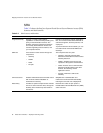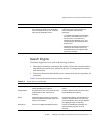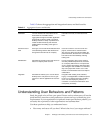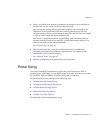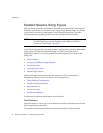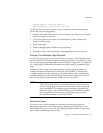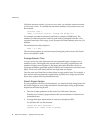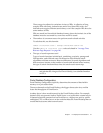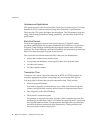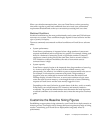Portal Sizing Tips
62 Portal Server 6 2005Q1 • Deployment Planning Guide
time, the number of Portal desktop activity requests, the amount of portal
channel usage, acceptable response time for the end-user which is determined
by your organization, and an optimal hardware configuration to meet the
criteria.
Portal Sizing Tips
This section contains a few tips to help you in the sizing process.
• A business-to-consumer portal requires that you deploy SRA to use the
Gateway and SSL. Make sure you take this into account for your sizing
requirements. Once you turn on SSL, the performance of the portal can be up
to ten times slower than without SSL.
• For a business-to-employee portal, make sure that you have a user profile that
serves as a baseline.
• For any portal, build in headroom for growth. This means not just sizing for
today’s needs, but future needs and capacity. This includes usual peaks after
users return from a break, such as a weekend or holiday, or if usage is
increased over time because the portal is more “sticky.”
• If you are deploying your portal solution across multiple geographic sites, you
need to fully understand the layout of your networks and data centers
• Decide what type of redundancy you need. Consider items such as production
down time, upgrades, and maintenance work. In general, when you take a
portal server out of production, the impact to your capacity should be no more
than one quarter (1/4) of the overall capacity.
• In general, usage concurrencies for a business-to-employee portal are higher
than a business-to-consumer portal.
Establish Performance Methodology
Once you have established your performance goals, follow the steps below to tune
your portal environment.
1. Identify and remove obvious bottlenecks in the processor, memory, network,
and disk.





